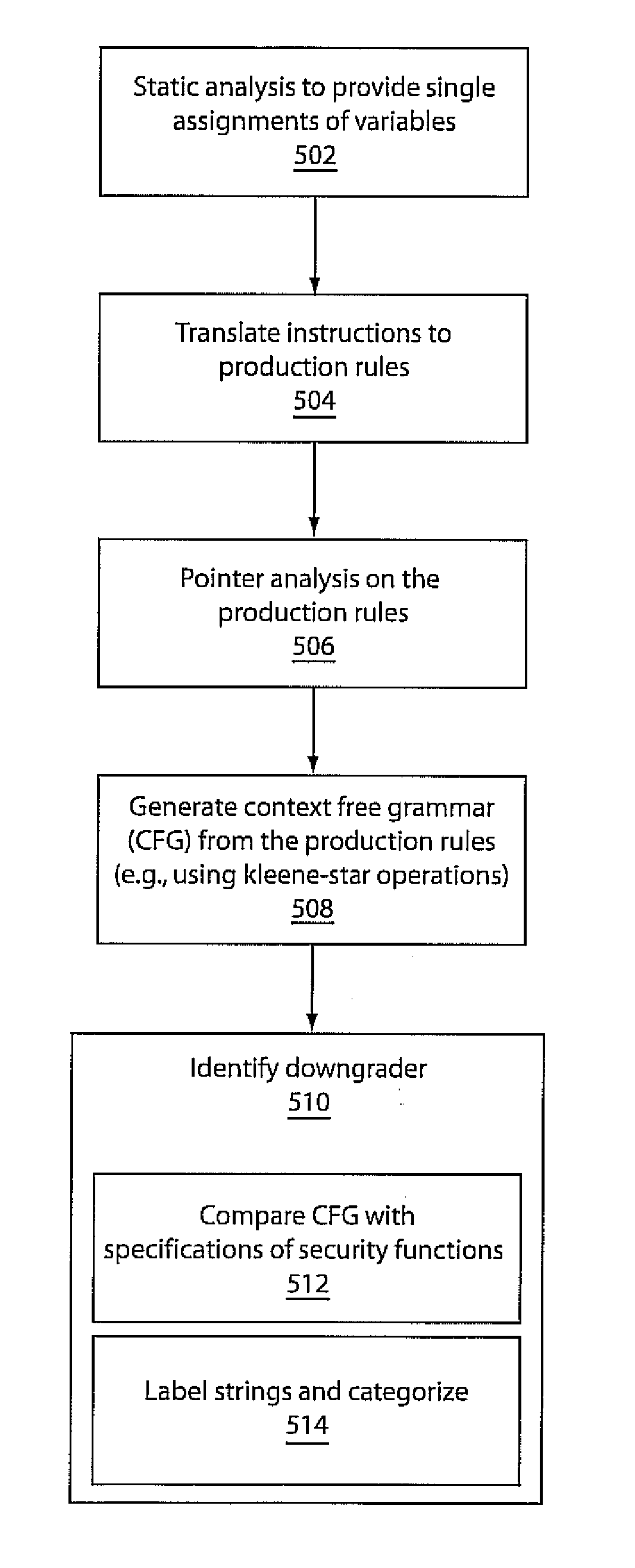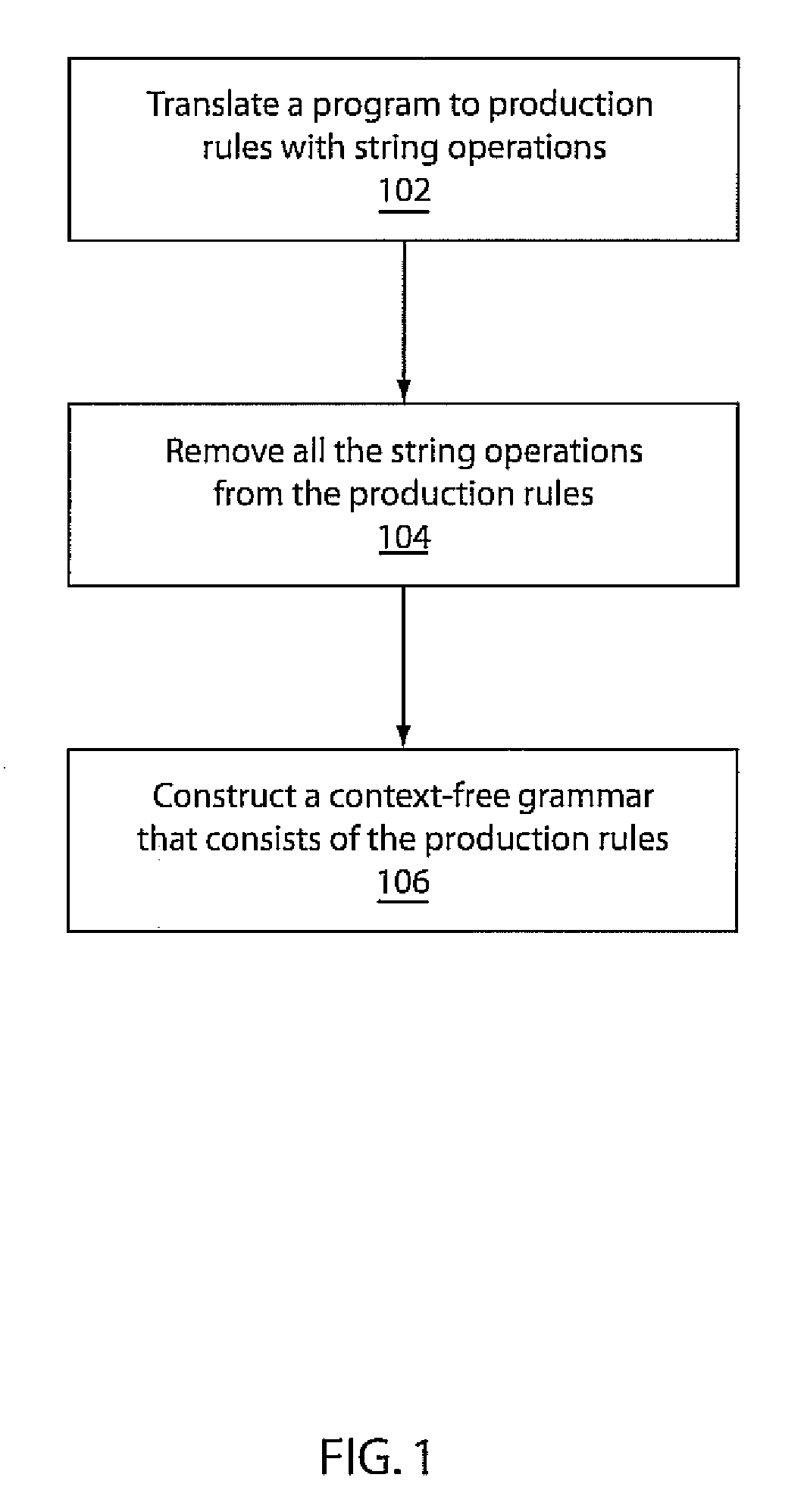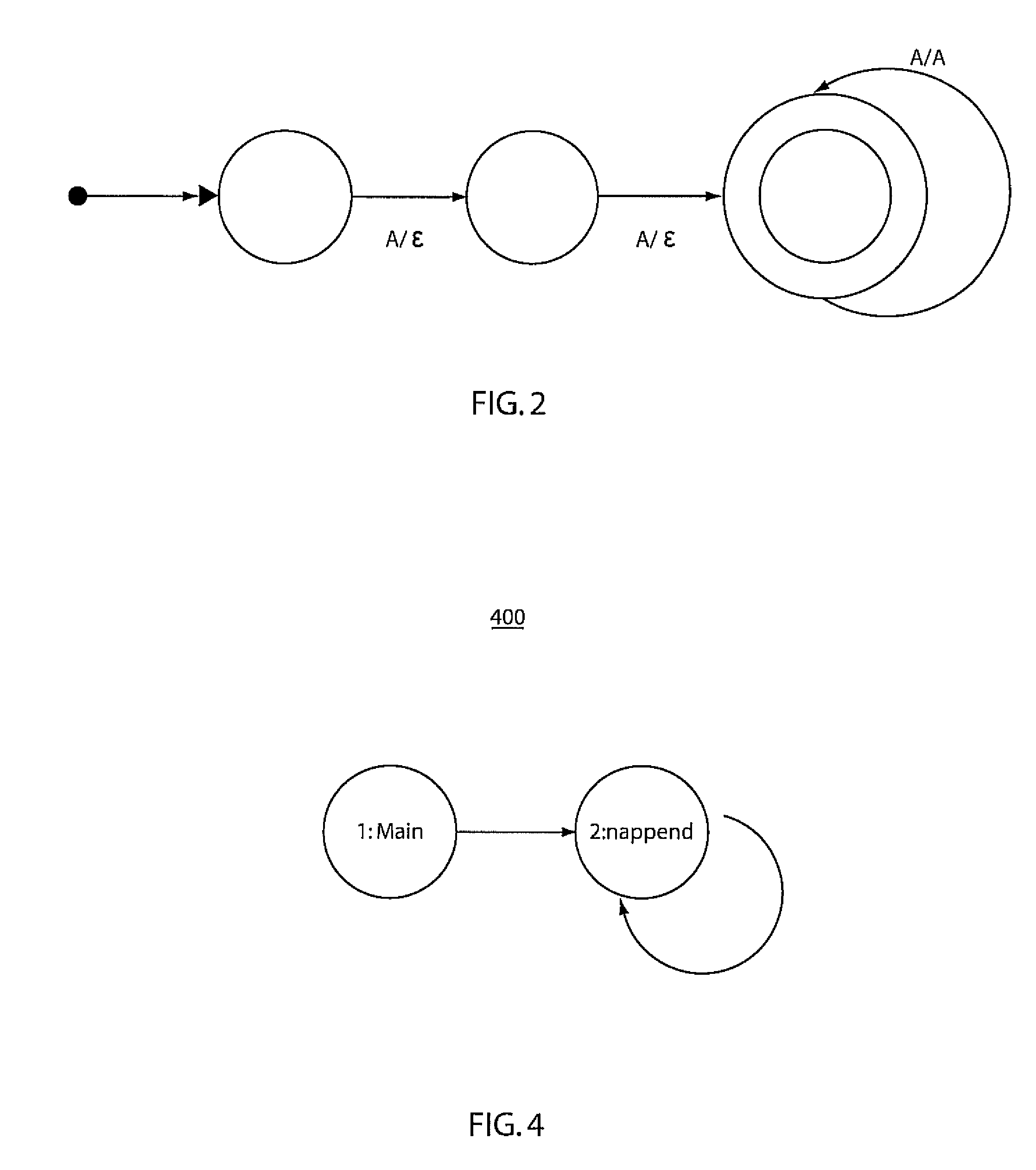System and method for static detection and categorization of information-flow downgraders
a static detection and information flow technology, applied in the field of static program analysis, can solve the problems of illicit flow, inability to work most programs, and very unlikely to be useful for programs with restrictions
- Summary
- Abstract
- Description
- Claims
- Application Information
AI Technical Summary
Benefits of technology
Problems solved by technology
Method used
Image
Examples
Embodiment Construction
[0024]Embodiments in accordance with the present principles employ static string analysis for automatic detection and categorization of information-flow downgraders. The use of static string analysis identifies downgraders and categorizes them based on their purposes. In one illustrative embodiment, the analysis proceeds as follows. For each security-sensitive function in the program, we use string analysis to detect the grammar(s) of the string input(s) to the function. We then compare that grammar with a specification of the security-sensitive function. If the grammar satisfies the specification, it implies that the input was properly downgraded. In that case, using the labeling feature of the string analysis, it is possible to locate the string-manipulating functions that modified the input and made it specification-compliant. Those functions constitute a downgrader for the security-sensitive function. Furthermore, the specification of the security-sensitive function can be used ...
PUM
 Login to View More
Login to View More Abstract
Description
Claims
Application Information
 Login to View More
Login to View More - R&D
- Intellectual Property
- Life Sciences
- Materials
- Tech Scout
- Unparalleled Data Quality
- Higher Quality Content
- 60% Fewer Hallucinations
Browse by: Latest US Patents, China's latest patents, Technical Efficacy Thesaurus, Application Domain, Technology Topic, Popular Technical Reports.
© 2025 PatSnap. All rights reserved.Legal|Privacy policy|Modern Slavery Act Transparency Statement|Sitemap|About US| Contact US: help@patsnap.com



